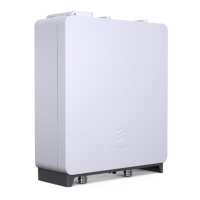PRELIMINARY
Technical Data
• Materials' fire resistance, components, wires, and cables
• Recycling
• Restricted and banned material use
3.6 Power Characteristics
This section describes the power supply requirements, power consumption,
and fuse and circuit breaker recommendations for the radio.
Different power systems can supply power for multiple radios, if necessary.
3.6.1 DC Power Characteristics
The power supply voltage for the radio is
0
48 V DC. The power supply
requirements are shown in Table 8.
Table 8 Radio DC Power Supply Requirements
Conditions
Values and Ranges
Nominal voltage
0
48 V DC
Operating voltage range Radio 2217 and Radio 0208:
0
36.0 to
0
58.5
VDC
Radio 2218:
0
38.0 to
0
58.5 V DC
Non-destructive range 0 to
0
60 V DC
The radio is designed for 3-wire power connections. For 2-wire power solutions,
a DC adapter is used.
Fuse and Circuit Breaker Recommendations
The external fuse and circuit breaker recommendation for the radio are shown
in Table 9.
The recommendations given in this section are based on peak power
consumption and give no information on power consumption during normal
operation.
The recommended melting fuse type is gG-gL-gD in accordance with
IEC 60269-1. Circuit breakers must comply with at least Curve 3 tripping
characteristics, in accordance with IEC 60934.
The radio has a built-in Class 1 (Type 1) Surge Protection Device (SPD)
to protect the equipment in case of lightning and network transients. The
recommended fuse or circuit breaker rating is therefore dimensioned not to trip
the fuse or circuit breaker in case of most SPD operation. The minimum fuse
23
181/1551-LZA 701 6001-1-V1 Uen PC3 | 2016-01-13

